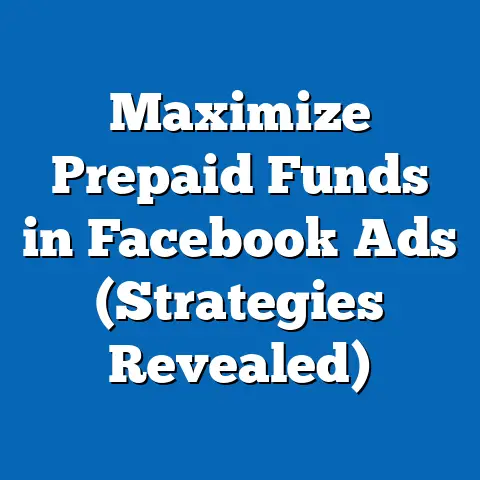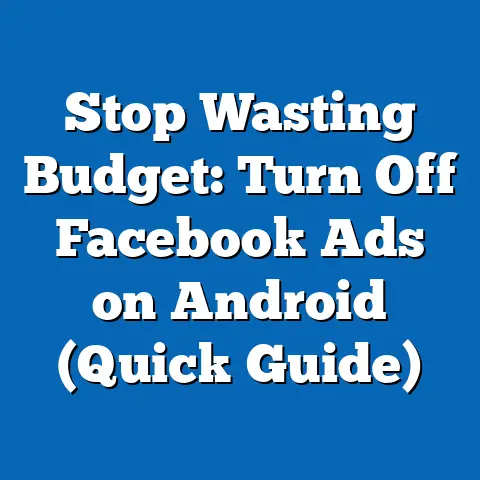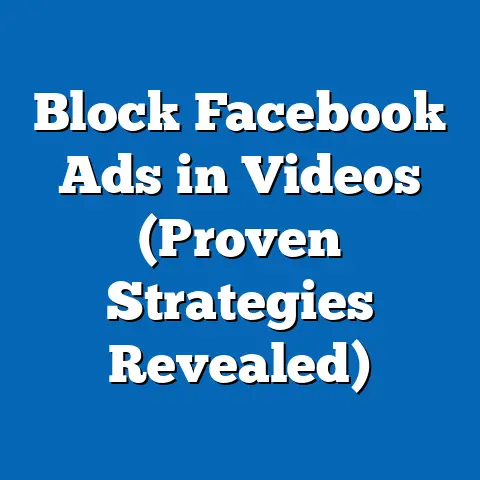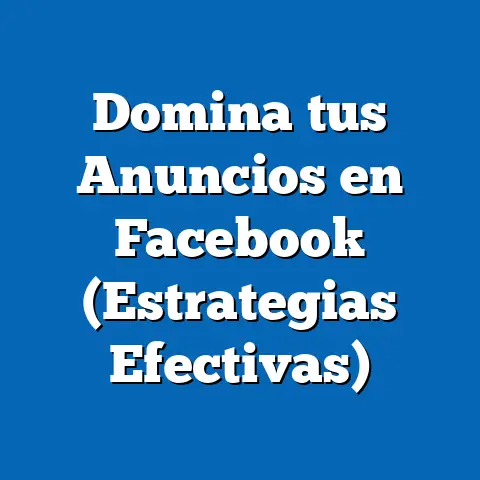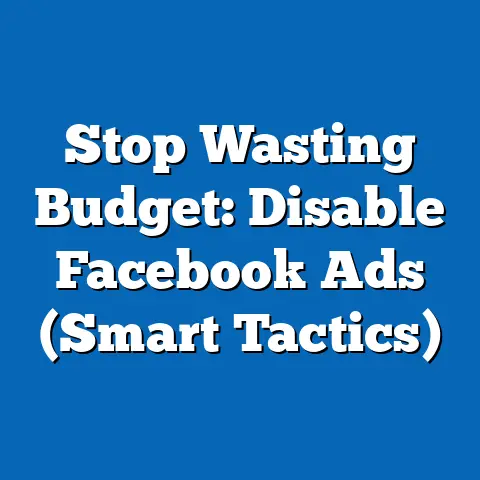Run Facebook Ads from a Closed Group? (Unlock Proven Strategies)
Have you ever felt like you’re shouting into a void with your Facebook ads? I know I have. It’s frustrating to pour your heart, soul, and budget into campaigns that just don’t seem to resonate. In today’s crowded digital marketplace, it’s harder than ever to stand out. We’re constantly bombarded with information, and it can feel like our messages are simply getting lost in the noise.
And what about those valuable conversations happening behind closed doors, in exclusive Facebook groups? It can feel like you’re missing out on a goldmine of potential customers, a community perfectly tailored to your products or services. You see the engagement, the camaraderie, and you know that if you could just tap into that, your advertising results would skyrocket.
Well, I’m here to tell you that you can. Within those seemingly exclusive realms lies a treasure trove of opportunity for running incredibly effective Facebook ads. In this article, I’m going to unlock proven strategies that can transform the way you approach advertising within closed groups. Get ready to feel empowered, excited, and finally see the ROI you deserve. Let’s dive in!
Understanding the Dynamics of Closed Groups
So, what exactly are closed groups on Facebook, and why are they so different from public groups or even Facebook Pages? Think of them as digital living rooms. They’re spaces where people gather around shared interests, passions, or even challenges. Unlike public groups, you need to be invited or approved to join a closed group. This creates a sense of exclusivity and belonging that’s incredibly powerful.
The key difference lies in the trust and community that these groups foster. Members feel more comfortable sharing their thoughts, asking questions, and engaging with each other in a genuine way. This creates a fertile ground for targeted advertising. Imagine having access to a highly engaged audience who are not only interested in your niche but also actively seeking solutions and recommendations. That’s the power of advertising within closed groups.
For example, I once worked with a small business that sold handmade jewelry. They were struggling to reach their target audience through traditional Facebook ads. However, after identifying a few closed groups dedicated to crafting and DIY projects, we tailored their ads to speak directly to the interests of those groups. The results were amazing! We saw a significant increase in engagement, click-through rates, and ultimately, sales. The secret? We tapped into a community that already existed and spoke their language.
Key Takeaway: Closed groups are more than just online communities; they’re hubs of trust and engagement. By understanding their unique dynamics, you can unlock incredible advertising opportunities.
Crafting Your Ads for Closed Groups
Now that you understand the power of closed groups, let’s talk about crafting ads that actually resonate with their members. This isn’t about generic, one-size-fits-all advertising. It’s about creating compelling messages that speak directly to the interests, language, and culture of the specific group you’re targeting.
First and foremost, you need to do your homework. Spend time observing the group’s conversations, identifying their pain points, and understanding their unique vocabulary. What are they talking about? What are they struggling with? What kind of language do they use? The more you understand the group, the better you’ll be able to craft ads that resonate.
For example, let’s say you’re advertising a new software tool designed for freelancers. If you’re targeting a closed group of freelance writers, you might focus on the pain points of managing multiple clients, tracking deadlines, and invoicing. Your ad copy might say something like: “Tired of juggling spreadsheets and chasing invoices? Our new software makes it easy to manage your freelance business and get paid on time!”
Visuals are equally important. Forget stock photos and generic images. Choose images or videos that evoke a sense of belonging or urgency. Consider using user-generated content, testimonials, or behind-the-scenes glimpses of your product or service in action. The goal is to create a visual that is both appealing and authentic.
But don’t just show; tell a story. Storytelling is incredibly powerful in advertising. Weave narratives that connect with the group’s identity and values. For instance, if you’re promoting a sustainable fashion brand within a closed group of environmental activists, tell the story of how your products are made ethically and with minimal environmental impact.
Key Takeaway: Tailor your ad copy and visuals to the specific interests, language, and culture of the closed group you’re targeting. Use storytelling to connect with their values and create a sense of belonging.
Engaging Your Audience Through Targeted Ads
Facebook’s targeting capabilities are a game-changer when it comes to reaching the right audience. But simply knowing that targeting exists isn’t enough. You need to understand how to leverage it effectively to reach members of closed groups.
Facebook offers a variety of targeting options, including demographic, interest-based, and behavioral targeting. Demographic targeting allows you to reach people based on their age, gender, location, education, and other demographic factors. Interest-based targeting lets you target people based on their interests, hobbies, and passions. Behavioral targeting allows you to reach people based on their online behavior, purchase history, and other actions.
The key is to combine these targeting options to create highly segmented ad campaigns that speak directly to the diverse interests within the closed group. For example, let’s say you’re advertising a new fitness program within a closed group of busy moms. You might create separate ad campaigns targeting different segments of the group, such as moms with young children, moms who work full-time, and moms who are interested in specific types of fitness, like yoga or HIIT.
Once you’ve created your segmented ad campaigns, it’s time to start A/B testing. This involves creating multiple versions of your ads with different headlines, images, and calls to action, and then testing them against each other to see which ones perform best. A/B testing is crucial for optimizing your ad campaigns and ensuring that you’re reaching the right audience with the right message.
I remember working with a local restaurant that wanted to promote their new brunch menu. We targeted a closed group of foodies in the area and created two different ad campaigns: one focused on the delicious food and the other on the social experience of brunching with friends. After running the campaigns for a week, we discovered that the ads focused on the social experience performed significantly better. This insight allowed us to optimize our ad campaigns and drive more traffic to the restaurant.
Key Takeaway: Leverage Facebook’s targeting capabilities to create highly segmented ad campaigns that speak directly to the diverse interests within the closed group. Don’t forget to A/B test different ad formats and messages to see what resonates best with the audience.
Building Authentic Relationships
In the world of social media, authenticity is king. People are tired of being bombarded with generic, salesy ads. They want to connect with brands and businesses that are genuine, transparent, and relatable. This is especially true within closed groups, where trust and community are paramount.
Before you even think about launching ads, it’s crucial to build authentic relationships with group members. This means participating in discussions, offering free value, and responding to queries. Become a valuable member of the community, not just someone who’s trying to sell something.
For example, if you’re advertising a new marketing tool within a closed group of small business owners, don’t just start posting ads. Instead, share helpful tips and strategies, answer questions about marketing, and offer free resources, like templates or checklists. The goal is to establish yourself as a trusted expert and build a genuine connection with group members.
Once you’ve built those relationships, you can start to introduce your products or services in a more subtle and organic way. Create a seamless transition from engagement to advertising, ensuring that your ads feel like a natural extension of the group’s conversations.
One of the most effective ways to do this is to share your own experiences and stories. Talk about how your product or service has helped you or your customers solve a problem or achieve a goal. Be honest and transparent about the challenges you’ve faced and the lessons you’ve learned.
I once saw a small business owner promoting her handmade soaps in a closed group dedicated to natural skincare. Instead of just posting ads, she shared her personal story about struggling with sensitive skin and how she developed her own soap recipes to find relief. She then offered a discount to group members who wanted to try her soaps. This approach was incredibly effective because it was authentic, relatable, and provided real value to the community.
Key Takeaway: Building authentic relationships with group members is crucial for advertising success. Participate in discussions, offer free value, and respond to queries. Create a seamless transition from engagement to advertising by sharing your own experiences and stories.
Measuring Success and Adjusting Strategies
So, you’ve crafted compelling ads, targeted the right audience, and built authentic relationships. But how do you know if your efforts are actually paying off? That’s where measuring success comes in.
There are a variety of key metrics you can use to evaluate the performance of your ads within closed groups. These include engagement (likes, comments, shares), click-through rates (CTR), and conversion rates (the percentage of people who take a desired action, such as making a purchase or signing up for a newsletter).
Facebook Insights is a powerful tool for tracking these metrics. It provides detailed data about your ad performance, including demographics, interests, and behaviors of the people who are engaging with your ads. You can also use other analytics tools, such as Google Analytics, to track website traffic and conversions that result from your Facebook ads.
The key is to be adaptable and willing to tweak your strategies based on the data you collect. If you’re not seeing the results you want, don’t be afraid to experiment with different headlines, images, targeting options, and ad formats. Continuous optimization is essential for maximizing your advertising ROI.
I remember working with a client who was struggling to generate leads through their Facebook ads. After analyzing their data, we discovered that their ads were performing well in terms of engagement and click-through rates, but they weren’t converting into leads. We realized that the problem was with their landing page. It was slow, confusing, and didn’t clearly communicate the value of their offer. After redesigning the landing page, we saw a significant increase in lead generation.
Key Takeaway: Track key metrics, such as engagement, click-through rates, and conversion rates, to evaluate the performance of your ads. Be adaptable and willing to tweak your strategies based on the data you collect.
Conclusion
The potential that lies within closed groups for running successful Facebook ads is immense. By understanding the unique dynamics of these communities, crafting compelling ads, targeting the right audience, building authentic relationships, and measuring your results, you can unlock incredible opportunities for increased visibility, stronger connections, and ultimately, higher sales.
Don’t be afraid to experiment, learn, and adapt your strategies along the way. The journey of engaging authentically with your audience is well worth the effort. With the right strategies, you can break through the noise, truly resonate with your target audience, and achieve the advertising success you deserve. So go out there, find your tribe, and start connecting!


